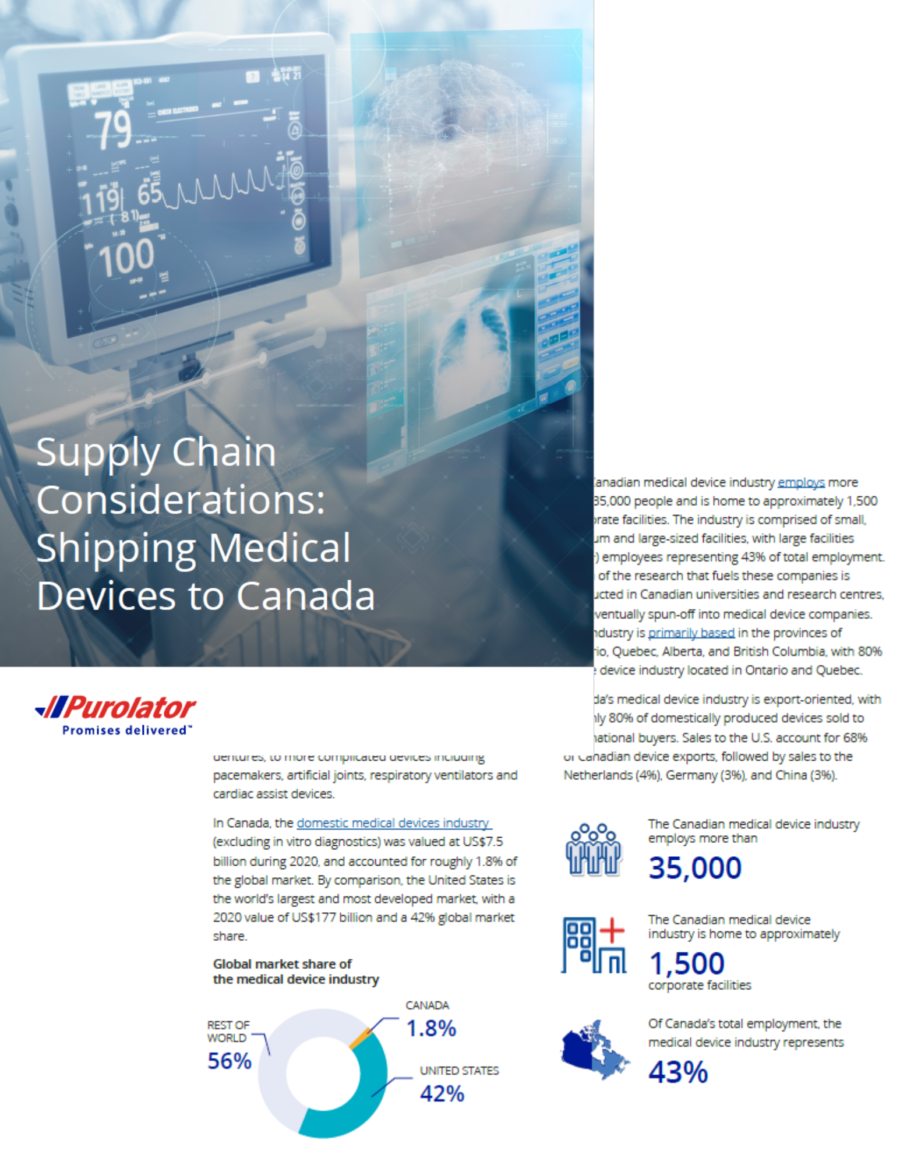Forty percent of medical devices used in Canada come from the United States. While the United States has long been Canada’s largest international supplier of medical devices, U.S. manufacturers now have an important opportunity to expand sales, or begin shipping medical devices to Canada.
That’s because, as Canada recalibrates its healthcare supply chain in the aftermath of the pandemic, demand is increasing for products manufactured closer to home. Canadian officials experienced firsthand the consequences of relying on single-source providers located thousands of miles away. Supply chains thought to be rock solid proved vulnerable to pandemic-caused manufacturing and shipping bottlenecks.
Before U.S. device makers reach out to potential Canadian customers though, it’s important to understand that market, and have a well-developed strategy that addresses some “uniquely Canadian” considerations. Some of those considerations include:
- Health Canada regulates medical devices and claims to have “some of the most stringent requirements in the world.” While many Health Canada requirements track with those imposed by the U.S. Food and Drug Administration, a manufacturer must be aware of all differences, and ensure full compliance.
- All label information must appear in both French and English, and meet other packaging and labeling requirements. In addition, measurements must be consistent with metric system standards, and meet other precise requirements as outlined in Canadian packaging and labeling mandates.
- Each Canadian province and territory administers its own healthcare system, with unique procurement requirements. Canada has a publicly financed healthcare system which guarantees “free” treatment for all “medically necessary” conditions. Health care is administered by each of Canada’s 13 provinces and territories though, which means procurement practices and “medically necessary” coverage can vary from one entity to the next.
- Hospitals and other medical facilities have dramatically changed medical device delivery requirements. Canadian healthcare facilities increasingly require deliveries within specific timeframes, inside deliveries and increasingly, deliveries of time-sensitive materials to patients’ homes.
- Shipping to Canada is quite different from shipping within the U.S. and requires a unique Canada-specific logistics strategy. Most U.S. providers do not offer comprehensive services in the Canadian market, and most Canadian provinces only offer regional service. These factors have caught many U.S. businesses off-guard, and resulted in chaotic, highly inefficient entries to the Canadian market. Instead, a device manufacturer should take the time to enlist an experienced Canadian logistics partner with a deep understanding of that market, and the resources to ensure efficient, on-time deliveries to all Canadian addresses.
In our whitepaper, you’ll learn about:
- Opportunities for U.S. businesses in the medical device industry in the Canadian market
- Operating in Canada: the framework of Canadian healthcare
- Building a healthcare-specific logistics strategy
- The intricacies of the customs clearance process for medical devices
Canada offers tremendous opportunities for U.S. device makers. Our white paper provides an overview of that country’s healthcare structure, and also gets into the nitty gritty of a successful logistics strategy. As many businesses have come to learn, Purolator is a logical partner for ensuring success in the Canadian market. See what we have to offer your business.

